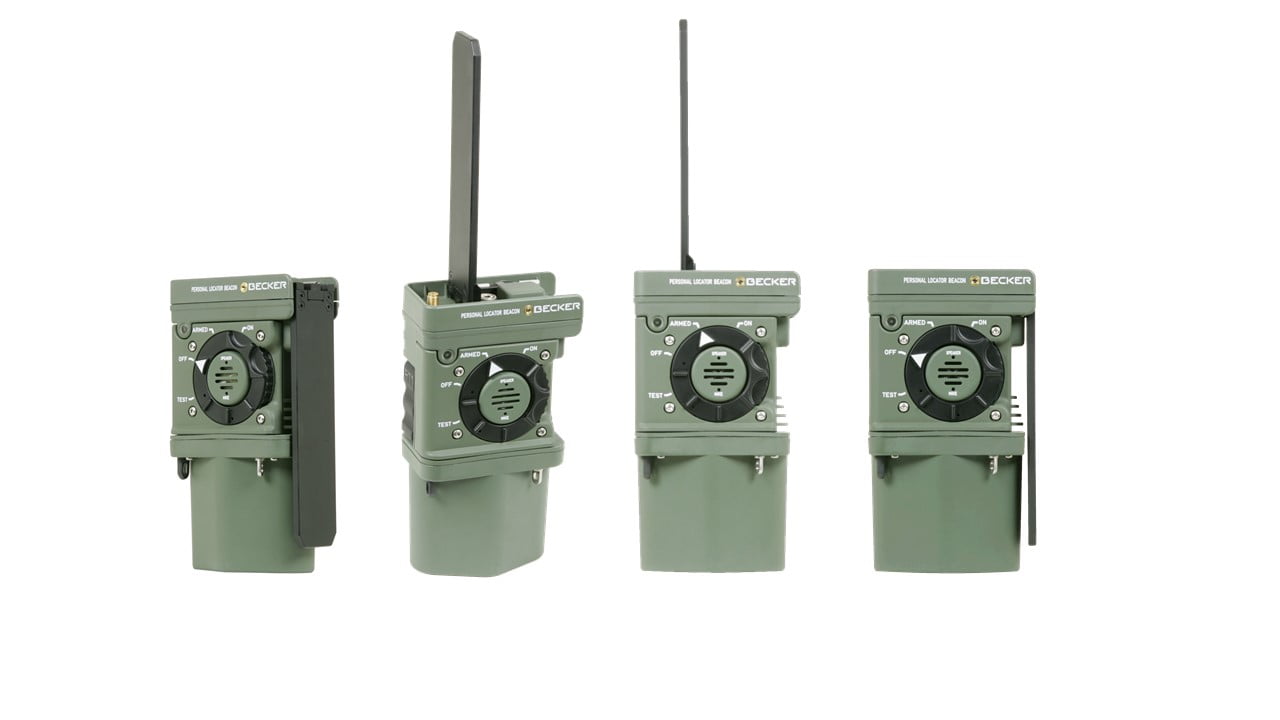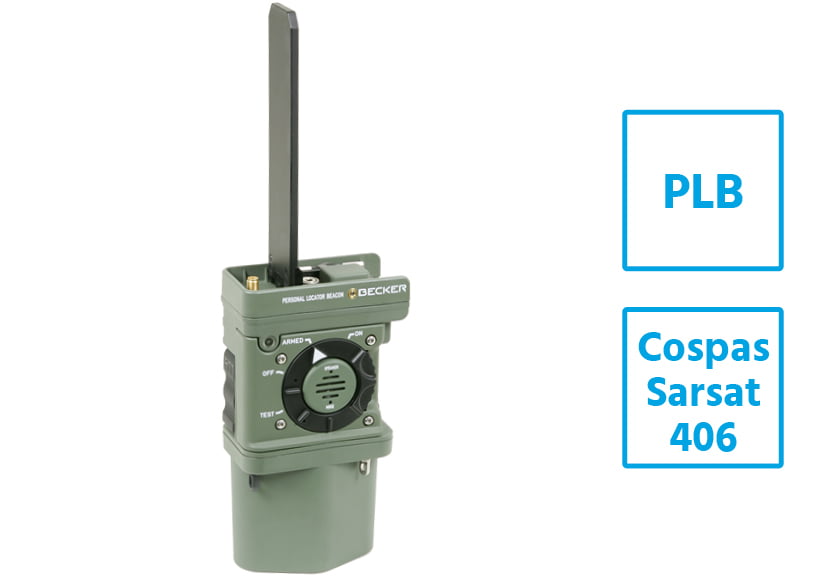- Fully self-contained (transceiver, V/UHF/C-S antennas, with latest generation 72 channels GNSS (GPS/Galileo, GLONASS)
- Compact, lightweight, state-of-the-art technology
- Manual or automatic activation by lanyard or water immersion
- Life vest and ejection seat capability
First-class military grade distress beacons, designed to sustain the harshest mission profiles. State-of-the-art satellite technology, simplicity of operation and outstanding reliability records are our guarantee for durable performance, to help saving the lives of those who protect us.
Becker Avionics offers since 1970 the best in SAR technology and has delivered more than 30 000 beacons.
The new generation of Becker´s MR510 PLBs offers military-grade performance, with advanced features including GPS technology, which make it easier and quicker for COSPAS-SARSAT satellites to pick up distress signals and relay an accurate location to rescuers.
Pinpointing the location of the person in distress will quickly help search and rescue agencies to better locate individuals and save lives.
The MR510 is the most advanced COSPAS-SARSAT certified handheld PLB available today. It is a rugged, multipurpose survival radio and locator device designed for civil and military aircrews, naval and ground personnel.
Transmissions from the MR510 are omnidirectional and continuous for at least 24 hours at extreme temperatures
(-40 °C) to help facilitate detection by satellites, aircraft or vessels, or by any other land, sea or airborne installation monitoring these frequencies.
Features
- COSPAS-SARSAT certification
- Designed for all airborne, land and marine applications
- Multi emergency band – 121.5 MHz, 243.0 MHz and 406 MHz
- Two-way VHF or UHF voice communication (programmable)
- Fully self-contained (transceiver, V/UHF/C-S antennas, with latest generation 72 channels GNSS (GPS/Galileo, GLONASS)
- Compact lightweight, with State-of-the-Art technology
- Manual or automatic activation by lanyard or water immersion
- Life vest and ejection seat capability
- Initiated Built-In-Test feature
- Compliance with: Stanag 7007 P 1 PSAR, MIL-STD 810F, ED-14E (DO-160E)


